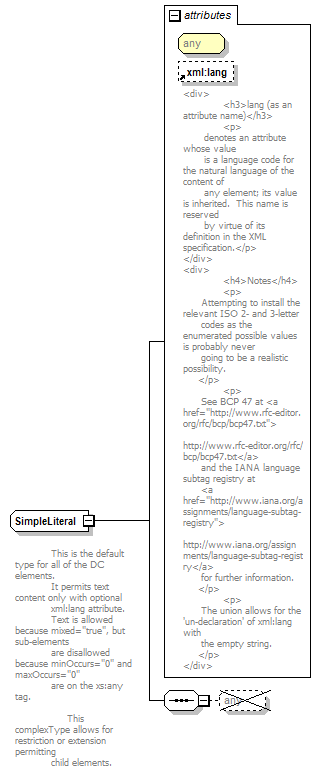PwgPrintJobTicket_v1.0 - SimpleLiteral
complexType
SimpleLiteral
XML Schema documentation generated by XMLSpy Schema Editor http://www.altova.com/xmlspy
| diagram |  |
||||||||||||||
| namespace | http://purl.org/dc/elements/1.1/ | ||||||||||||||
| type | restriction of xs:anyType | ||||||||||||||
| properties |
|
||||||||||||||
| used by |
|
||||||||||||||
| attributes |
|
||||||||||||||
| annotation |
|
||||||||||||||
| source | <xs:complexType name="SimpleLiteral" mixed="true"> <xs:annotation> <xs:documentation xml:lang="en"> This is the default type for all of the DC elements. It permits text content only with optional xml:lang attribute. Text is allowed because mixed="true", but sub-elements are disallowed because minOccurs="0" and maxOccurs="0" are on the xs:any tag. This complexType allows for restriction or extension permitting child elements. </xs:documentation> </xs:annotation> <xs:complexContent> <xs:restriction base="xs:anyType"> <xs:sequence> <xs:any processContents="lax" minOccurs="0" maxOccurs="0"/> </xs:sequence> <xs:attribute ref="xml:lang" use="optional"/> </xs:restriction> </xs:complexContent> </xs:complexType> |
XML Schema documentation generated by XMLSpy Schema Editor http://www.altova.com/xmlspy